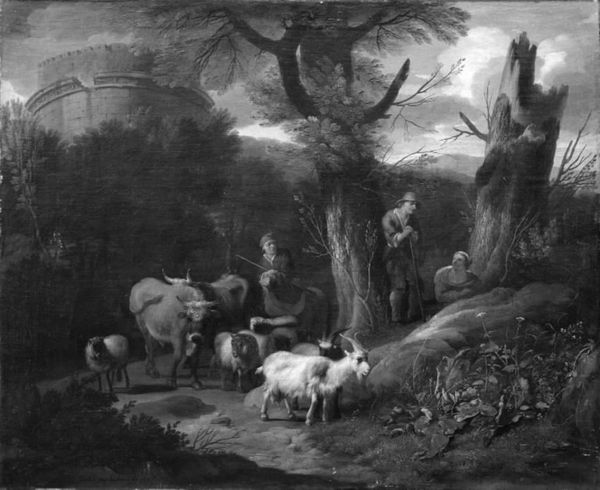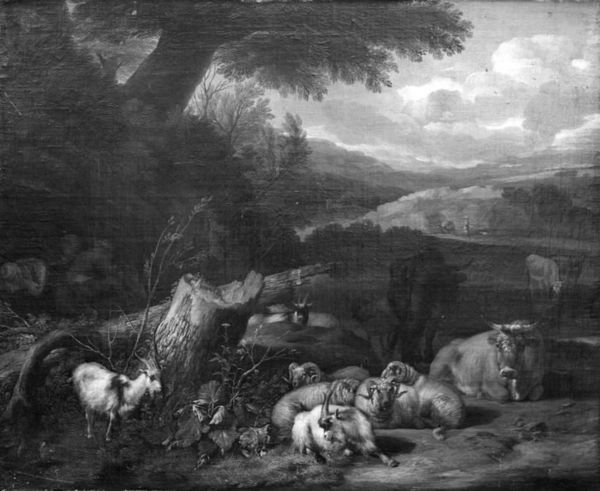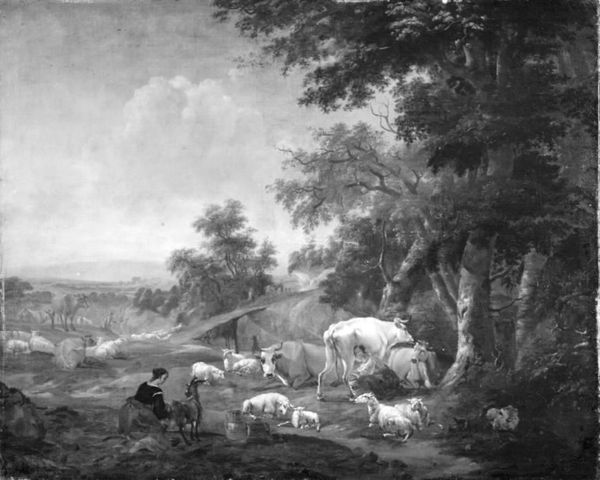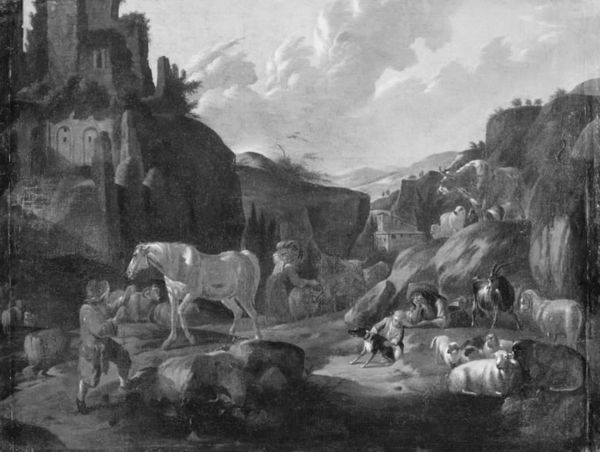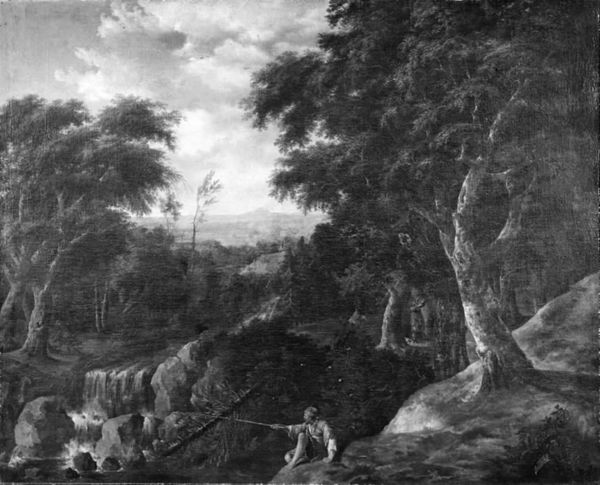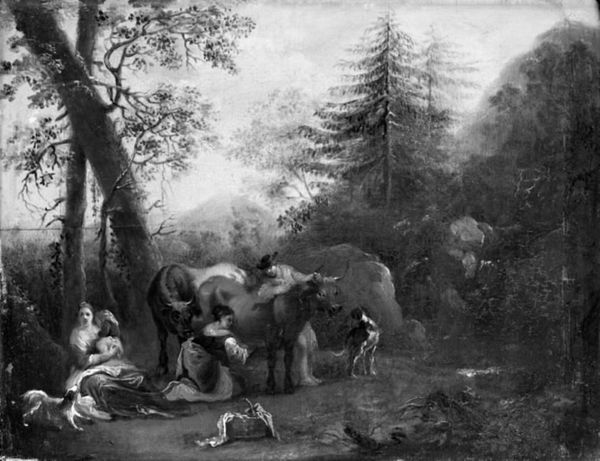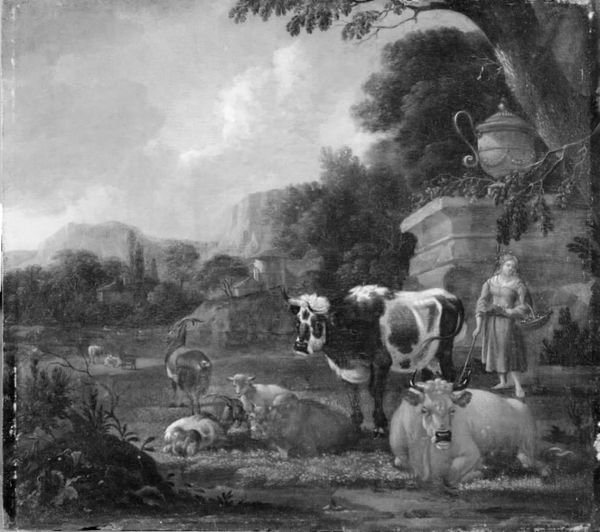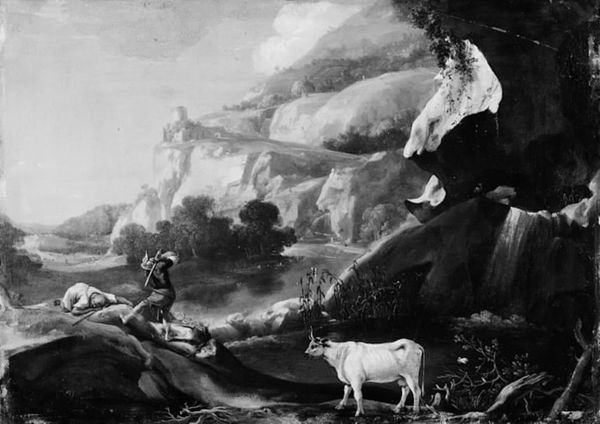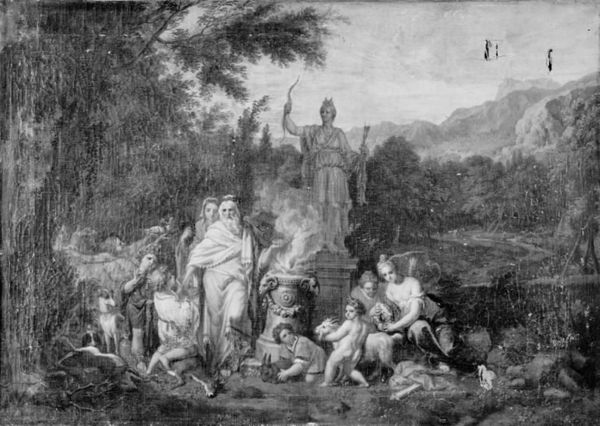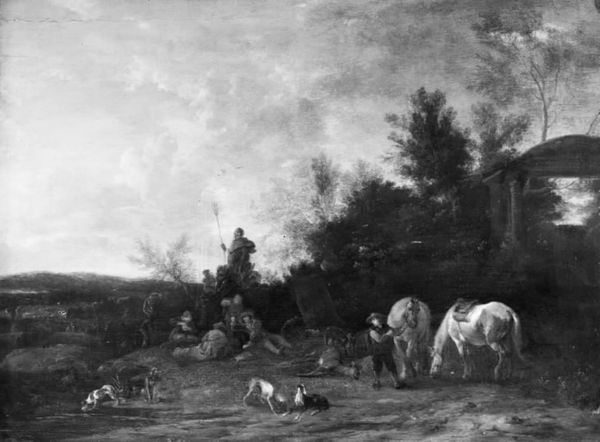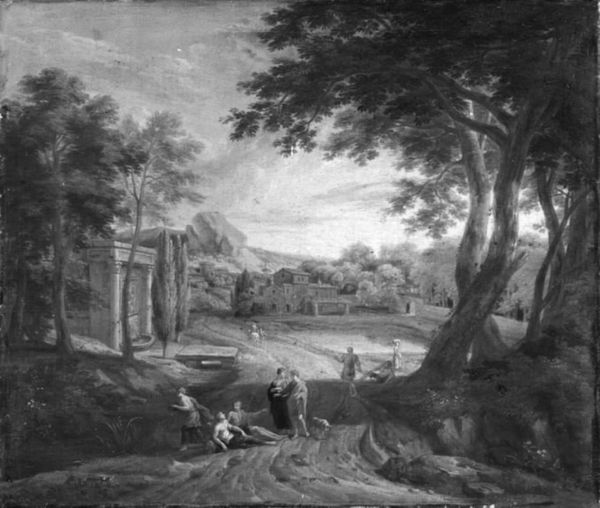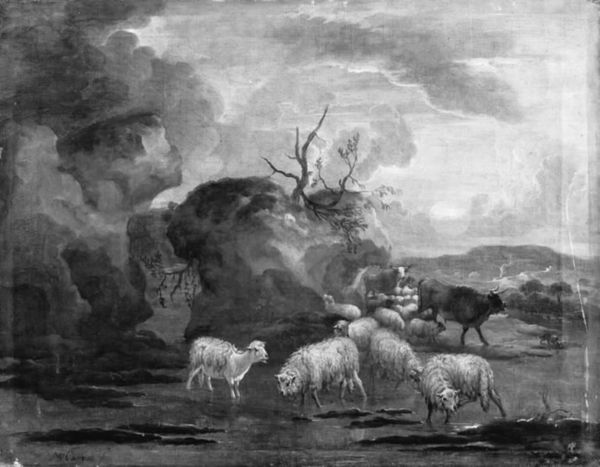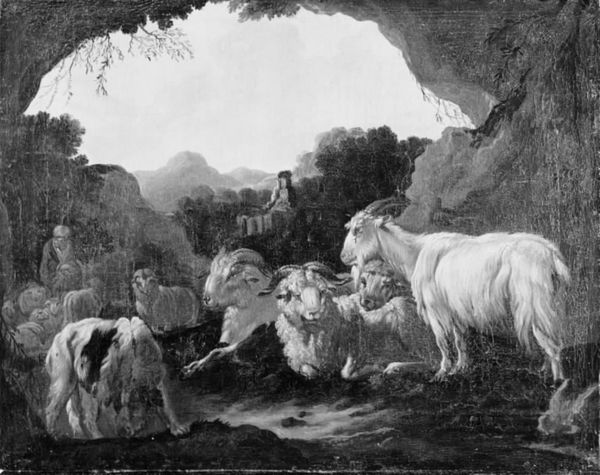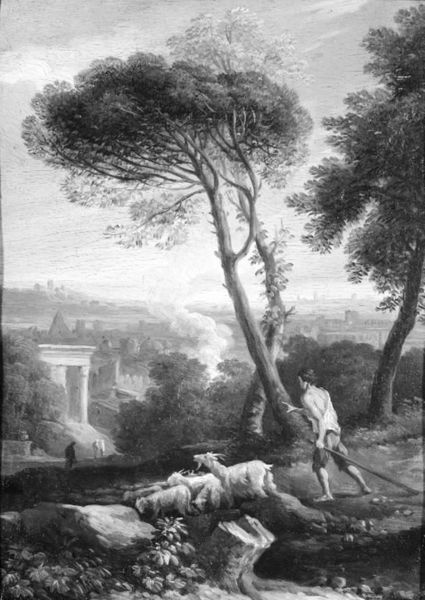
painting, canvas
#
baroque
#
painting
#
landscape
#
charcoal drawing
#
canvas
#
genre-painting
#
charcoal
Dimensions: 42 cm (height) x 53.3 cm (width) (Netto)
Curator: Michiel Carree created this piece, "Cattle Piece," sometime between 1672 and 1727. The medium is oil on canvas. What’s grabbing your attention first, would you say? Editor: A wave of calm. It's moody, almost nostalgic. Like a charcoal drawing capturing a quiet afternoon. It's very muted in tonality—is that deliberate or just age, I wonder? Curator: The subdued palette speaks to certain traditions within Baroque landscape painting. Artists used earth tones to evoke a sense of realism and the sublime, reflecting the period's worldview and artistic values. Consider too the function of "genre painting" which celebrated everyday rural life, often intertwined with social and political narratives. Editor: True. The livestock are quite… pastoral. You see their mundane beauty but I suppose that in focusing on animals, the painting really speaks volumes about humanity's relationship with nature, ownership, land… It's fascinating how it invites deeper contemplation. What about the composition? Does it follow established rules? Curator: There’s a definite structure: note how Carree employs strong diagonals and strategically places elements. It's not just a snapshot; it's carefully designed to direct your eye. But what are the implications for viewers? Editor: Makes me want to wander into that field and lie down under a tree, you know? To experience that slower rhythm of life—something really different. And that, in itself, feels significant, almost an act of gentle resistance to the chaos around us. Like finding stillness amidst the noise. Curator: Absolutely, and situating this in its time illuminates class structures as well as landscape appreciation among privileged audiences. Editor: Right. In my contemporary response, what I appreciate is how Carree manages to provoke feelings through his portrayal of the commonplace. It’s the same thing as poetry, really, using something you think you know, the visual world, and reshaping it to illuminate more abstract insights about experience. Curator: So we could see the quietude as revolutionary. Interesting food for thought! Editor: I leave changed, now. Thank you for guiding my meandering thoughts. Curator: The pleasure was all mine.
Comments
No comments
Be the first to comment and join the conversation on the ultimate creative platform.
